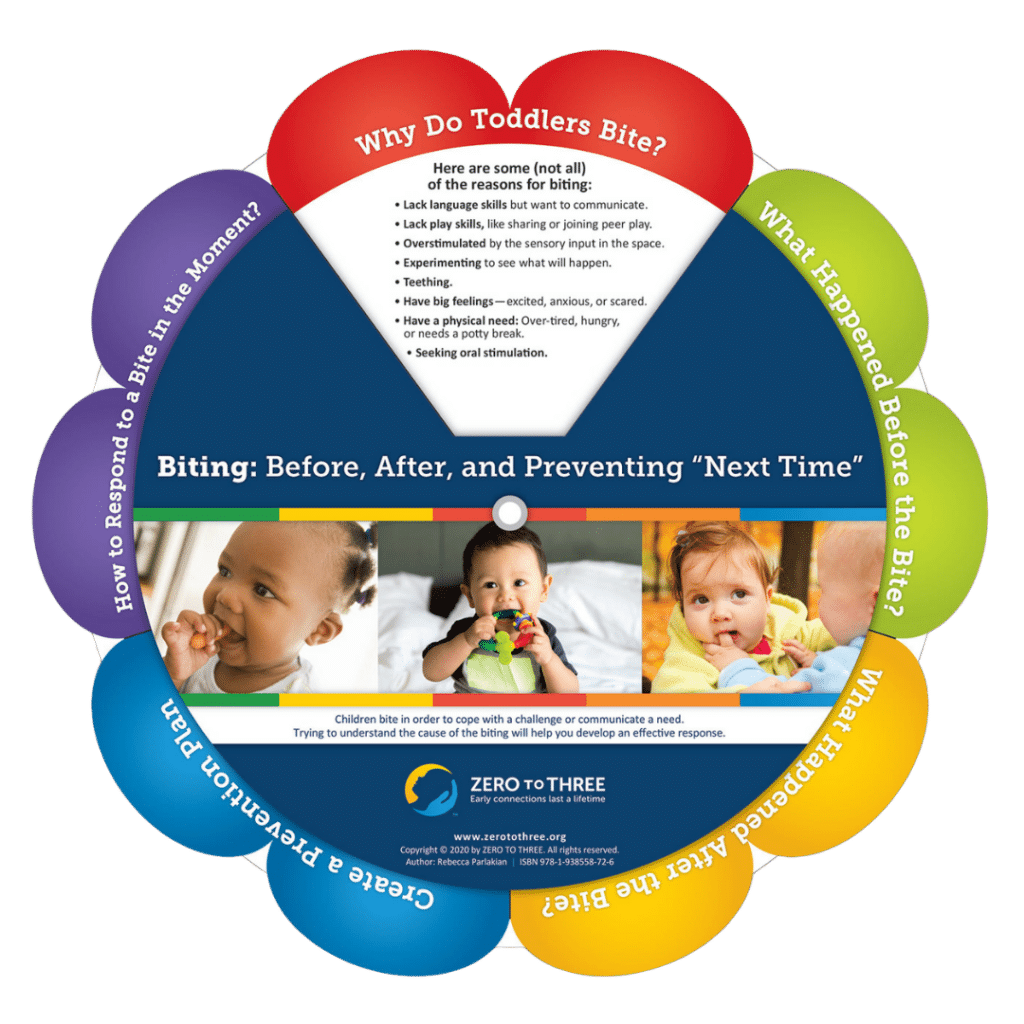Understanding the Why is Key to Prevention
Our bite wheels (in both English and Spanish) help caregivers understand how to respond to the child who bit and the child who was bitten, and learn how to prevent biting in the future.


Good news — you’ve taken the right first steps by looking for the cause, speaking with the child about how biting hurts, and making sure the parents are involved.
As you’re probably aware, biting is a normal part of infant and toddler development. There can be several causes, including teething discomfort and the inability to verbalize feelings of frustration, anger, or excitement. But if you’ve already ruled out other causes, it may help to think about biting as a toddler’s form of problem solving.
That’s right — biting really can be a way for toddlers to problem solve! Infants and toddlers are always investigating and experimenting to figure out how things work.
If he gets frustrated in his interactions with other young children, and biting puts an end to the frustration, it might seem like the right solution to him.
Understanding the Why is Key to Prevention
Our bite wheels (in both English and Spanish) help caregivers understand how to respond to the child who bit and the child who was bitten, and learn how to prevent biting in the future.

It’s important to prompt toddlers through social problem solving. To support this child in moving past biting, you can model problem solving and help him develop more appropriate strategies for meeting his needs. Adults’ responses to infants’ and toddlers’ social cues, which create back-and-forth social communication and reciprocity, help to enhance children’s earliest social experiences with other adults and children. With practice, educators can become quite good at interpreting what children think, want, and feel in social situations.
Behavior guidance that flows out of consistently warm, nurturing interactions that build strong attachment is a much broader, more complex undertaking than simply getting children to be obedient. In a relationship-based approach to behavior guidance, the educator considers the “whole”: the whole child, the whole educator, and the whole relationship. (Critical Competencies for Infant-Toddler Educators™, 2017)
Let’s look at some strategies to consider when using a relationship-based approach in behavior guidance. (These strategies are derived from the Critical Competencies for Infant-Toddler Educators™ Promoting Socialization and Guiding Behaviors curricula):
With your support and encouragement, children can develop natural problem-solving skills and learn to use new strategies instead of biting.

|
2025 LEARN Conference registration is now open! Join us in Baltimore Oct. 8-9.
|